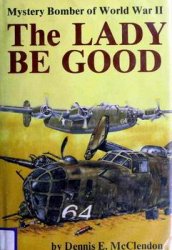The initial Allied landings came as a complete surprise to the Luftwaffe. No German reconnaissance aircraft reported the approach of the armada, and initially there was no reaction from the defenses. Even when Luftflotte 3 had firm evidence that the landings had begun, the powerful defensive umbrella prevented it from mounting effective air attacks. During one attempt to reach the shipping. Mustangs of the 355th Fighter Group intercepted a gaggle of Junkers Ju 88 bombers and shot down nine of them and forced the remainder to jettison their bombs and run for home.
A few German fighters did succeed in reaching the landing area that morning, however. In a well-known incident a pair of Focke-Wulf Fw 190s piloted by Oberst Josef Priller, commander of Jagdgeschwader 26, and his wing man Unteroffizier Heinz Wodarciyk delivered a strafing attack on Sword Beach. Elsewhere, a dozen Messerschmitt Bf 109s bounced Typhoons of No. 183 Squadron as the latter were engaged in strafing a column of German Army vehicles, and shot down three before the remainder were able to fight them off. The total Luftwaffe effort during the day amounted to about a hundred sorties, mainly by fighters, fighter-bombers and fighter-reconnaissance aircraft.
The Illrd Gruppe of Schlachtgeschwader 4, a ground attack unit with some 50 Focke-Wulf Fw 190Fs, was one of the Luftwaffe units sent in during the initial stages of battle. On the morning of D-Day the Gruppe received orders to move from its bases in the south and east of France to forward operating airfields at Laval and Tours. During such combat deployments a mechanic was carried in the rear fuselage of each Focke-Wulf, to assist in the rapid turnaround of the aircraft when it arrived at the new base. Unfortunately for those on board, as the German fighter-bombers were in transit, several of them were intercepted by Mustangs and Thunderbolts. Five of the German planes were shot down and, lacking parachutes, the mechanics had no means of escape. Their pilots refused to bail out and leave them, and of the ten men on board the planes, eight were killed.
Flying from the new bases late on the afternoon of D-Day, the Gruppe mounted three attacks against Sword Beach with a total of 13 aircraft. Allied fighters prevented one raiding force from reaching its target, the other two got through to the beachhead but the volume of anti-aircraft: fire forced them to make fleeting attacks which caused litde damage.
That night there were violent skirmishes at the western end of the English Channel, as U-boats from the bases along the Biscay coast tried to force their way past the Cork patrols. The patrol planes obtained contacts on 22 U-boats and converted seven of these into attacks. Two U-boats were sunk and four were damaged to such an extent that they were forced to turn back.
At dawn the surviving U-boats submerged, for a daylight passage was far too dangerous to attempt. After darkness fell on the evening of June 7, the U-boats surfaced and doggedly continued their move eastwards trying to recharge their depleted batteries. The patrol planes were again in action and one of them, a Liberator of No. 224 Squadron RAF commanded by Flying Officer Kenneth Moore, achieved the unique feat of sinking two boats - U-373 and within a space of 15 minutes.
In the days following the initial landings Allied bombers and fighter-bombers continued their round the clock attack on the road and rail networks leading into Normandy. On the night of June 8/9, 24 Lancasters of No. 617 Squadron RAF carried out a precision attack on the Samur rail tunnel using 12,000lb (5,440 kg) “Tallboy” deep penetration bombs. The exploding bombs collapsed the tunnel and the line was blocked for a considerable period.
Also that night, Luftflotte 3 sent about 130 bombers to attack the concentrations of Allied shipping off the coast. During their approach flights the attackers suffered losses not only from the Allied night fighters, but also from German flak batteries long accustomed to regarding all aircraft as hostile. Those bombers that reached the beachhead area encountered so violent a reception that in many cases they were forced to break off their attacks prematurely. The only Allied losses were the headquarters ship Bulolo and the destroyer Lawford, both of which were sunk by radio-controlled glider bombs.




 World History
World History









